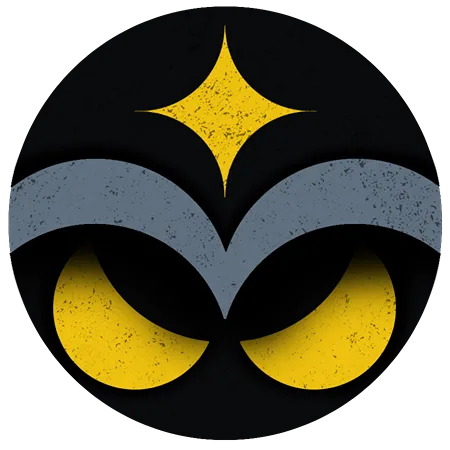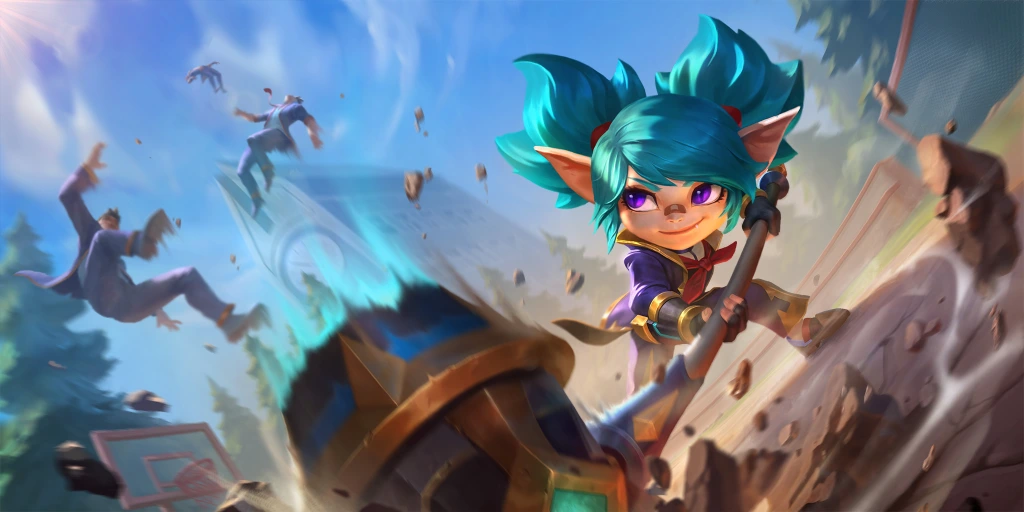Hello, guys!
My in-game name is bA1ance -- you may have seen it associated with the Mastering Runeterra MU Tables; I craft those with data from Balco -- but my real name is that of a famous muralist: Diego Rivera (my middle initial is G.).
I’m here to tell you about my card game journey, reaching the Legends of Runeterra Masters rank this season, and how I got there with two-times-nerfed Poppy (playing an Elusive Rally deck with Lulu and Poppy as champions). I'll also include a detailed deck guide for the archetype, including optimization tables, card analysis and matchups.
Since this is a bit of a long-form story, and many of you may prefer to skip some parts of it, here's a table of contents -- you can click on any topic to jump directly to it:
If you are here for the deck guide and want to skip directly there, click here:
CONTENTS (click on a topic to jump directly to it)
Magic: the Gathering - A Journey Begins
Getting on the Right Track with Matchup Spreads
Lulu Poppy Elusive Rally Deck Guide
Magic: the Gathering -- A Journey Begins
I first started playing CCGs at the time Odyssey was released for Magic: the Gathering, and the first cards I laid eyes on were from an Invasion pre-constructed deck.
Dragons and spells caught my attention, and soon Magic and card games with friends would consume my thoughts. My best friend at that time was introduced to competitive Magic at his technological institute, and from there we searched for opportunities to build up our collections as well as compete. I wasn’t sure why he would play his spells at the end of my turn, but I was intrigued and set out to understand the basic game rules to help our matches go smoothly.
The first Magic interaction with friends outside of my inner circle was with a group of fellows that had a box of Odyssey and we got to drafting. The games were fun and after the draft we separated out the rares from all of the packs, as part of our prizes, picking them in order by how well we did.
Captured - Hook, Line, and Sinker
What really struck a chord with me (side note: I don’t paint, but I do love music and play the saxophone, other instruments, and I sing) was when the winner of the draft showed me his binder of cards. Two cards caught my attention, so I asked about them -- and though they seemed innocuous at best, he let me know why they were powerful. The cards were Scroll Rack (link) and Mind Over Matter (link).
He explained to me with great care how the Land Tax deck (Death and Taxes) used Scroll Rack for card selection and the Stroke of Genius (link) combo deck used Mind Over Matter and Tolarian Academy (link) to fuel quick and reliable one-turn-kills.
I fell immediately in love with the idea of how, using a deck of randomized cards, a player could gain an edge and break the fundamental rules of the game to gain a significant advantage, and that ultimately lead to more wins for a skilled pilot.
As time went on and I grew a desire to compete in Magic (read: I had a full time job so I could buy boxes), I studied the game a lot with a focus on combo and control decks.
Going Deep
My studies of competitive Magic went deep (probably not as deep as many of you, but hear me out) -- I purchased a digital copy of Patrick Chapin’s Next Level Magic and enjoyed reading it all, I subscribed to Star City Game’s premium material and read all of their premium articles daily, I read through complete old Magic card sets to know what [quite literally] all of the cards did, I spent hours studying the banned and restricted lists for each format and learning why each of the cards were on there -- also in hopes I could spot new ones during spoiler season for new sets, watched pro coverage of as many high level events as I could, and followed competitive players and their content.
After going 0-2 drop in a Pro Tour Qualifier (PTQ) near LAX playing Blue Black Vampires Aggro, I realized I needed to play the best decks if I wanted a chance at competing at the top tables. That’s right, I started working towards building Blue / Red / Green (RUG) Control that used Primeval Titan with all the enemy fetch lands and 4 copies of Jace, the Mind Sculptor (he really is greater than all!). As soon as Blue / White Caw Blade was used at the Pro Tour, I started building that deck… only to make a difficult decision later that Fall.
My Love for Combo
Let me tell you about one of the best combo decks to ever have existed: Trix.
Trix was a Blue / Black-based combo deck that found Necropotence with a tutor (search your deck for a specific card), where the pilot used their own health to draw as many cards (no mana restrictions, only limited by the starting 20 health and damage incurred through the game) as needed to find Illusions of Grandeur to stock back up on [20] life, then Donate (it does exactly what it sounds like) the enchantment to the opponent, and when the opponent couldn’t pay the cost to keep the enchantment and themselves alive at the start of their turn, they lost their 20 life and the game.
The deck had a clear game plan and only relied on drawing 2 cards to win (the game designers are now especially careful not to design combinations of cards that win the game with only 2 cards), and it did everything necessary to get its engine running so that it could both find the game-winning cards and deny the opponent of the ability of trying to win, either through creature removal, discard effects, or counter spells to protect the combo.
Today, that sounds both glorious for the combo deck pilot and miserable for the opponent, but when I first learned about combo decks like this, I became instantly fond of them!
My Love for Control
In regards to control decks, throughout my studies, I came across a deck that was designed by Brian Weissman and known as “The Deck”. His quote about deck design seems poignant so I’ll include it here.
“Whatever style you wish to play, be it fast and frenzied or slow and tactical, the surest way to defeat your opponent consistently is by dominating him or her in the war of card advantage. Whatever style you play, though, can and should incorporate a mix of all classes of Magic cards, whether single-card effects or lock cards, card drawing or card nullification. Once you've got the right mix, you'll be able to focus on flawless play and prudent drawing.
—Brian Weissman”
Read on if you want to know what gut-wrenching-Attrition-embodied-in-a-deck feels like, and be thankful our LoR developers don’t want this for us:
As Mike Flores explained “The Deck”, its primary goal was simply to not die. The deck would thwart opposing unit attacks either one-by-one with efficient removal spells (think of a 1-mana cost Vengeance) or broadly with the enchantment Moat (think of a Landmark that says “allies without Elusive can’t attack”...and it just stays there -- all game long!). It would draw more cards than the opponent and make the opponents discard multiple cards using only one of its own cards. The win condition was Serra Angel -- a unit at that time which could both attack and hold down the fort vs small opposing flying units. That said, while the deck could do anything and everything, the pilot had to be savvy about the order in which they played their cards (think of Damian playing Ez Draven) in order to survive and turn the corner, as we like to say, to the point where the opponent would be out of resources and the pilot, having many options on how to manage the game state, easily riding the in-game decisions to victory. Those games would be long and drawn out and nowadays formats have sped up dramatically since you have to combat turn 3 wins from the aggressive decks, but the principles and strategies from “The Deck” hold true to this day across many different card games. As you can see, this type of deck sounds both miserable and fair to play against, but it opens the path to where a more skilled deck pilot can gain the advantage in a card game of randomized cards -- this is what I love about card games and why I still enjoy combo and control decks so much to this day.
Looking forward from that point in time, I got married in 2009 and I had a gut feeling it was the time to buy a house, and knowing I wanted to also have children, I decided to set my priorities straight, sell my collection, and abandon my aspirations to play Magic competitively.
Other Card Games
Solforge and bA1ance
I thought I could stay away from collectible card games…
… how foolish of me!
In September 2012, the Kickstarter for Solforge went live. It was a new digital CCG designed by Justin Gary, the one-and-only Richard Garfield (creator of Magic: the Gathering) and the Dragon master, Brian Kibler -- I backed that game and looked forward to the day I could play it on a mobile device.
As soon as that day arrived, I searched for a team as it seemed to be a game I could love, play for free, and be competitive in. I applied to join A1 (Alliance One) and got accepted, I was stoked! To this day, I still have several friends from those good ole’ days.
At some point, after seeing lots of players with cool IGNs, I decided it was time to choose one for myself. I thought of cards that could fit my identity as well as “A1” in the name, and it came together relatively quickly and nicely. I love cards that appear to be fair on the surface for both players but in fact are not (think Wrath of God from Magic, or The Ruination in LoR), I’m a Libra (born on September 27, 9/27 and 9 = 2 + 7…ok I’m nerding out here) so the scales and the Magic card Balance came to mind -- bA1ance, it worked perfectly!
in LoR), I’m a Libra (born on September 27, 9/27 and 9 = 2 + 7…ok I’m nerding out here) so the scales and the Magic card Balance came to mind -- bA1ance, it worked perfectly!
So I had a cool gamer name, but when it came to actually playing the game, I found it difficult to prioritize which decks to build and usually felt a bit anxious when it came to playing games in the draft mode and the in-game 4-round tournaments.
Until I had a complete collection, I did everything I could to build it up as well as learning how to draft (shout out to The Noetherian and his great instructional YouTube videos) and playing the in-game tournament mode.
Solforge and the Ranked Ladder
I still had another challenge to overcome -- the time I had available to play in community-driven or developer-run tournaments on the weekends.
And, along with this, the developer was working in collaboration with another company to get the game into Open Beta and into full-release mode with a new client -- the new client added a ranked ladder to the system.
Once the ladder went live, I saw all my friends climb to the highest rank quickly… while I struggled using outdated decks from past metas, that had been nerfed to the ground. I was afraid of not gaining but losing rank instead, and didn’t invest a lot of time in trying to grind and climb the ranked ladder. To put it concisely, I was failing to adapt to the metagame, and I let ladder anxiety get the best of me.
With the new in-game client for Solforge having a poor launch, and the developer starting to wane in developing new cards for the game, the game began to die rather quickly and I started looking at other options. I dabbled a bit in Hearthstone and realized quickly that it would probably be more expensive and time-consuming than Magic: the Gathering to keep up with (due to my limited time so I couldn’t grind the Arena mode), and I had difficulty climbing the ranked ladder as I was still getting familiar with all the cards and decks. If I recall correctly, I had reached the tenth level with an aggressive demon deck (there were still win-streak bonuses available), but never had time to try and grind to the Legend rank.
Eternal
Soon I learned about Eternal, which is a digital CCG designed by Magic: the Gathering pros and I really enjoyed that game.
I reached the Master rank a few times using a 3-faction Crystalline Chalice control deck that I fine-tuned for what I was facing on the ranked ladder and another season I got there with a Feln Reanimator deck, that was tons of fun! The best rank I had ever reached was with a 3-faction Diogo combo deck where I reached Masters quickly and got to rank 105 while I was on my 10th anniversary in Cancun…
… right before the ranked ladder flooded with aggressive decks (damn those Skycrag Yetis!). I did reach Masters on a couple of other occasions but there were many seasons where I only reached Diamond rank and I think it’s because I failed to adapt quickly enough to the balance changes and changing metagame. I chatted a lot with the Friends of Eternal (FE) team in Discord and they helped me improve as a player, but I still had a long way to go.
Legends of Runeterra
In the meantime I had learned of a game called Legends of Runeterra, and it sounded like it was going to combine the best aspects of all the games I had come to know and enjoy along the way. It would include many mechanics similar to Magic, guaranteed mana every turn like HS, and lanes for battling like Solforge. It sounded like a dream come true and when the game went live in Open Beta, the game more than delivered!!!
Not knowing who to discuss strategy with about the game, I touched base with my old friends from A1 and friends who played Shadow Era and Eternal. Notably, I was in the midst of players who were great at other card games and I knew would do well in LoR, namely Ipwnfour (Erocdrah in game), lorgi, and soon NotoriousGHP.
Getting on the Right Track: Matchup Spreads
I started playing Legends of Runeterra (LoR) during Open Beta on my laptop, during breaks at work and on the car ride home, but as soon as the COVID pandemic hit, I stopped playing since I get little to no game time on PC at home. I didn’t have a complete collection but I was able to reach Bronze before the game was fully released and went into its first regular ranked season along with the new set and region, Bilgewater.
I forget which season it was, but when Heimer Vi Elusives was in full force, I built the deck, watched Metaworld Gaming’s video on it a couple of times, and took to the ladder. Wins came easily and I made the climb to Gold rank just before a balance patch came and nerfed the deck to the ground. It was too bad because that was the kind of deck I love -- a deck that could survive against most of the metagame (except for aggressive burn decks) long enough to execute its own game plan and get the opponent from 20 to 0 in a few swings.
Since I wasn’t comfortable playing on the ranked ladder again -- to be honest, I didn’t know what the best decks were so I didn’t want to waste my wild cards crafting a deck that I would soon regret crafting -- and there wasn’t much of a reason to grind the ranked ladder (Seasonals didn’t exist yet, and the Prismatic card style didn’t either), I didn’t invest too much time learning the metagame. However, once the Seasonal Tournaments and Prismatic card style were announced, I was inspired to play the ranked ladder to earn those sweet epic card style capsules and to try and qualify in order to participate in the large-scale tournament.
The Need for Focus
This is where I would lean on my friends to help guide my path. There are people that can play multiple games competitively, but being honest with myself (based on feedback I had received), I realized I could only try to be competitive in one game, so I stopped playing all other games so I could focus on LoR.
And, since I wasn’t familiar with all of the decks and I’m usually strapped for time, I was recommended to play Grand Plaza Scouts as games would be relatively quick and the deck was both strong and well positioned in the metagame. Without too much trouble, I was able to reach Platinum and then games started getting a bit tougher -- I tried to reflect on my matches after they were over to see if there were things I could do to improve, and I would ask my friends questions when I couldn’t figure out where I went wrong.
Then, the thing I feared happened again: a balance patch that hit the deck I was playing!
I consulted with my friends and stopped playing that deck not long after the balance patch and then picked up a community favorite: Discard Aggro (Draven Jinx). I rattled off a 13-game win streak to reach Diamond (woohoo!) and then I ran into the Anivia patch and couldn’t find a deck I could get comfortable to climb with, at least not for a while.
The Quest for Bling and Matchups
So I forget the exact timeline of the events here, but our end-of-season badges and the Seasonal tournament schedule announcements provide me some context.
I ended the Call of the Mountain season at Silver rank and the Seasonal tournaments were announced at the onset of the Monuments of Power release. I also ended that season at Silver rank and didn’t qualify for the tournament through the Last Chance Gauntlet. However, at the start of the Cosmic Creation season, the Prismatic card style was announced, so I wanted to grind to both qualify for the Seasonal tournament and to bling out my decks -- it’s a dream of mine to show up to a tournament with a fully blinged out 3-deck lineup and to bring home the win with it.
It was around this time that I started collaborating with Osciillate, and he was grinding ranked like a mad lad, learning what worked and what didn’t work. He made it to Masters using TF Fizz and told me and all of our friends about it. I didn’t want to risk losing LP in ranked mode to learn the deck, but I brought it to the weekly gauntlets to try it out and it sure was powerful.
Then something seemingly magical happened -- I stumbled upon a matchup spreadsheet by Cephalopod in the competitive LoR sub-Reddit, and shared it with my friends and asked them about it.
For me it was revolutionary!
Before this grid, I had to stumble in the dark on my own, through small sample sizes, and still not know what my decks were weak to or strong against, or why they would be considered a tier 2 or tier 3 deck (mind you, this is where a lot of combo decks fall, tier 1 and tier 0 decks anger communities at large). Much of my time thinking about LoR was now consumed with the matchup grid, interpreting it, and thinking where the data came from and when the next update would come… if at all.
Worried that it wouldn’t be updated or at least not as often as I would have liked / needed, I subscribed to Mobalytics+ and slowly started figuring out how good decks were against the field, at least from a theoretical point of view. With such information, I would now be able to wisely pick the decks I should learn and bring to the ladder. Not only that, if I lost, I could (and often did) go back to the spreadsheet and check if it was a favorable or unfavorable matchup for me.
With a bit of guidance, I set out to create the content I wanted to see: matchup grids that would be frequently updated. I even started learning about Confidence Intervals -- I refer to it as the dosage of salt to take with the matchup statistics, but in reality, it’s a measure on how reliable the data is.
The First Matchup Tables
I created my first matchup grid on January 15, 2021 based on Mobalytics+ data.
What a slugfest!
It took me about 4 hours to create as it’s a tedious thing to look through each archetype and input the data found into a spreadsheet. It actually would have taken me longer had I known how to filter down to lower play rates for decks since more matchups would have had more data to report.
Shortly thereafter, and before the Cosmic Creation Seasonal tournament, my friend NotoriousGHP gave me a huge pep talk about how pros approach game play and what they think about statistics. He used the analogy of Azir in League of Legends (LoL) and explained how at the end of the day, matchup statistics don’t matter all that much -- what matters is knowing a matchup (no matter how bad it might be for you) so you can navigate to the win. It’s such that in LoL, pros would hire opponents that were amazing with Azir so they would have the experience against top level pros running the champ.
Strapped for time, I knew I wouldn’t be able to reach Masters and Top 700 on the NA ladder, so I got to preparing matchup spreads for my lineup and my friends' lineups, for the upcoming Last Chance Gauntlet.
NotoriousGHP and I felt good about our lineups. Now, I’m not sure where Osciillate got the idea for it, but his lineup looked very strong, so GHP and I copied it and we all were able to qualify for the Seasonal Tournament using TF Fizz, Zoe Aphelios, and Fiora Shen. Granted, I was Waitlisted since I completed my gauntlet about 8 hours after it had opened, and I probably wouldn’t be able to play the Seasonal Tournament on Sunday, but I was very excited to have earned the Prime Glory!
I was able to enter and play in the tournament with Ez Draven, TF Aphelios, and Fiora Shen, but I missed my first round of play and lost the next 2 matches and didn’t get to play much after that.
No matter…
… I had been able to participate and would earn the tournament competitor icon -- one of my goals complete!
Next, I wanted to try and reach Masters, earn the tournament competitor card back, qualify for a Seasonal Tournament by being within the Top 700, at some point make it to Day 2, and eventually win a Seasonal Tournament.
One has got to dream big!
Building a Strong Mindset
Learning from Others and Asking for Help
An up-and-coming streamer at that time, MajiinBae, had won the Seasonal tournament. Osciillate invited me to his Discord and also shared a thought Bae had, although it probably wasn’t articulated very well to me. The thought that was relayed to me was something along the lines of:
"If you want to win a Seasonal Tournament, you need a reason for every single play you make."
While simplistic (and now that I know how Bae expresses himself, probably not on point), it still hit home that each play and decision made in-game has to propel you towards your goal. Soon Jae (Jason Fleurant) and Bae would start their own Mastering Runeterra Discord server, and I made sure to get in there quickly.
With all this help, I was able to climb to Diamond the day before the balance patch hit using Fiora Shen at a 69.8% win rate -- that felt really good! Not only that, I reviewed some game play for the Trundle Lissandra Watcher combo (TLC) deck and, keeping a good attitude (with a broken deck, 72.7% win rate through Diamond), I reached Masters (for the first time!) within 1 week of the balance patch and I couldn't be more excited, happy, and proud of myself.
Keep in mind I was averaging 3-5 games a day up to this point, so for me to be able to get enough games in to reach Masters was mind-boggling to me!
Here Be Tilt
I was excited and ready to qualify for the Seasonal tournament, either through the Last Chance Gauntlet or getting to the Top 700 ranks.
I did get there momentarily with Thresh Nasus, shortly after that deck had been refined… but then I lost all of my LP. And I couldn’t seem to climb with TLC either. Worst of all, when it came to the Last Chance Gauntlet, I went in with 2 or 3 prime glory (I forget exactly), but in my first round against a triple aggro lineup, I lost 0-2 and then I lost 1-2 in my next set.
My hopes started slipping away… I even tried playing more games on the ranked ladder to try and reach the 150 LP needed for Top 700, but couldn’t get any traction.
Feeling a bit deflated, I picked myself up and crossed off another goal from my list that I had accomplished along my journey, that of reaching Masters. I forget if Jae had shared the YouTube video on tilt before or after that season, but I want to share it with all of you because it has been fundamental to my growth as a player.
Leak Buster Video: Controlling Tilt In Poker
In my own words, I can say that when we play the ranked ladder, we’re signing up for tough games, so yes, losses will come.
However, those are great games to learn from, so always be sure to try and figure out where you went wrong. It could have happened at each and every step along the way, from the mulligan, to the order you played your cards in, to saving or using your mana effectively, not playing around a card or set of cards, through combat, or perhaps using or not using your health as a resource effectively.
There are a lot of decisions we make in-game and each contributes to either a W or a L, but it’s up to us to interpret how well we performed in the areas that were under our control. Sometimes we can’t figure it out on our own and it’s ok to ask for help with VOD reviews of our gameplay. (Note: I’m able to express this confidently in my own words about 9 months after the first time I reached Masters.)
The Fire
Feeling on top of the world since I had hit Masters for the first time, I was upset, or rather impacted, when Guardians of the Ancient released because Azir Irelia showed up and with a relatively large presence. I wanted to jam games with TLC but couldn’t / wouldn’t, because that would mean facing a horrible matchup very often on the ladder.
Don't Trust Twitter (that much)
I tried to adapt the TLC deck for the metagame, but ended up at 50% over 20 games or so and had to look for a new deck to climb with.
In addition to that, I saw lots of folks talking about the power of Azir Irelia on Twitter and I let that affect me, to the point I didn’t want to play much LoR ranked ladder. I did try some Azir Irelia in ranked play, but was just barely above 50% (20-17) with it -- I wasn’t understanding yet the mulligans and general game plan for the different types of matchups one could expect on the ladder. I should have dug in harder and pressed forward, but I let my negative attitude and low number of ranked games each day hold me back.
After Irelia got "bug-fixed buffed" and I watched (read: studied) Moe’s video deck guide for dummies on it, I was able to thrive with the deck (21-8) and I reached Diamond quickly with the new version of it.
Now, this season I wasn’t able to qualify for the Seasonal Tournament through the LCG, and while I came close to Masters (D1 or so) with Azir Irelia, I dipped back down to D3 (this is common and happens to a lot of us), but I didn’t get enough games in to actually reach Masters.
New lesson learned -- I love this game and it’s best I filter my Twitter feed, or at least not give it too much weight to the point where it negatively affects my attitude, and I let it hold me / hold myself back because of it.
Gift of Akshan
When the Rise of the Underworld season started, we also got the new Sentinels of Light Expansion 2 weeks after the set release, and with the mini-expansion the world received the gift of Akshan. Thankfully, RiotRubinZoo broke the format with Zed Sivir beforehand and Akshan Sivir proved to be even more powerful!
This is when I started paying very close attention to Moe’s YouTube deck guides for dummies -- they were awesome and had everything I needed to help me continue improving. Card by card explanations (in case I hadn’t figured it out on my own), typical play patterns and combinations that help advance your game plan, and useful mulligan advice against each major archetype (aggro, mid-range, and control) that I could use / base my thought process on when facing any deck on the ladder.
I tried out different variations of Akshan Sivir Ionia and, towards the end of season, the Demacia version which proved to be very effective once it was refined, but again I didn’t get enough games in to both identify a deck to climb with soon enough and also to reach Masters with. I started thinking to myself that 3-5 games a day for the duration of the season wouldn’t be good enough to reach Masters reliably. I needed to at least double that number to get there with a decent win rate of 60%.
I wasn’t sure what my friends were complaining about on the ladder when they were referring to the elusive deck, but Moe winning the seasonal tournament and my friend Az (KOB) reaching Top 32 with the exact same lineup (Discard Aggro, Elusive Rally, Pirate Aggro) caught my attention.
Soon I saw Dr. LoR talking a lot about Elusive Rally, and chatted with him about it after he posted an optimization table for it on Twitter. I had felt the power of the deck with long win streaks, but I also had sessions with it where I would go just above 50%. Dr. LoR set my mind straight about what I needed to do and how I should think and plan while in matches on the ranked ladder to get those wins.
Meeting LoR’s Number Crunchers
Now, I would be remiss to not mention a few of the statisticians in the LoR community, especially my direct source for data to easily fill in the matchup spreadsheets - Balco.
I sincerely can’t thank Balco, Legna, and Dr. LoR enough. My deck lists are chosen and fine tuned from Balco’s optimization tables, personal matchup spreadsheets that I fill out with data from Legna’s website, and the idea of trying to optimize decks came from Dr. LoR -- I didn’t even know that was a thing until I tuned in to his Twitter feed!
What I do with the regularly updated matchup spreadsheets pales in comparison to what they are all able to do and I doubt I would feel as confident in my ability to choose decks to learn and grind ladder with if it weren’t for them!
Arriving to Bandle City
Talking about the first season with the final and 10th region, Bandle City in Beyond the Bandlewood, I was getting more ranked games in and I used Akshan Sivir Demacia to reach Platinum, but I would have to adapt to the new metagame of Zoe Nami and Draven Sion if I was going to figure out the new metagame.
I set out to explore the metagame and climb as much as possible as well as prepare a lineup for the Last Chance Gauntlet. I wanted to present a conundrum to my opponents: play against Zoe Nami and lose or ban my Zoe Nami and lose (since my 2 other decks were Zed Poppy Elusive Rally and Akshan Sivir Demacia).
After enough exploring and going 94-83 in Platinum, I reached Diamond, but there wouldn’t be enough time for me to grind to the Top 700 Masters rank.
No matter! I used my lineup to crush the LCG…
…uh, 18 hours after it had opened (my busy lifestyle trying to get in my way) and I just hoped and prayed I could participate from the waitlist.
Lo and behold, I got in the Open Rounds! Although I started out very distracted (I played into 2x Ruination from Darkness without looking at their deck list beforehand), I managed to go 6-3 and earn the tournament competitor card back -- I was stoked!
I ended the season again in the middle of the Diamond ranks and was excited for the next season -- I was worried that the Between Worlds season would be too short (I knew I wouldn’t be able to reach Masters in time even playing 10 games a day), so I set my sights to trying to climb as much as possible and also try to qualify for the Seasonal Tournament through the LCG.
Between Worlds Ranked
I was very excited going into this season, because I figured I had a deck to climb with, Zed Poppy, and so I needed to learn the deck just a bit better.
I was able to reach Platinum on day 8, and Diamond on Day 29 of the season. I got off to a climb early in Diamond, but then I stagnated at a 50% win rate for about 30 games with other decks, and then I locked back in on climbing with Zed Poppy.
The deck felt quite powerful and I went 31-17 with it before the season ended. I came so close, to within 20 LP of Masters (that is, of course, within 1 game win) but then I lost a couple of games and with the ranked reset being only 1 hour away, I played another stressful game so I could end the season at D1 with 60 LP and reset to Platinum 4 (with 10 LP to boot!) -- surely that would allow me time to reach Masters this season (…right?).
I put the game down [for a couple of hours] and looked forward to the current season, Magic Misadventures.
Magic Misadventures
With the new cards and broken Ezreal Kennen, I figured the start of the season was the best time to explore new decks (and explore I did!) until I settled back on Zed Poppy Elusive Rally.
Then came the hotfix balance patch, essentially nerfing Poppy to the ground, damn, time to adapt again… and adapt I would!
I actually started playing more games every day, about 6-10, so I could find a deck I could climb with reliably. Ahri Kennen with the Shurima splash seemed promising but I needed to play faster games to take advantage of my limited time. I saw TealRed playing Ahri Lulu PnZ on stream (don’t ask, but yes, I was awake at that time), and it looked like art when he played it -- then I saw Ultraman post that he made it to Masters with the deck so I asked him for mulligan advice. As elementary as it seemed, it was highly effective and I used the deck to reach Diamond in record time (for me) 20 days after the season started! I was overall 28-13 (68.3% win rate) with the deck.
I felt quite good at this point and so now that I was in Diamond I decided to give Ahri Kennen SH a try again and went 1-4 with it…
…ok, time to reassess. I switched back to Ahri Lulu PnZ and started climbing steadily with it. I had reached high D2 before the major balance patch notes were announced -- I should have tried to reach Masters before then so I wouldn’t have to stress. Well… I didn’t and now I would have to explore some more -- as soon as the patch notes were announced, players started bringing control decks that would soon be buffed to the ranked queues and I started losing more.
Thinking that Fizz Lulu Yordles in Arms would be better positioned, I gave the deck a try and went 3-3, not sure I could climb with this deck.
The balance patch hit and the entire metagame was shaken up.
Poros and Spiders were a thing now and I started playing even more in hopes of finding a deck to climb with. I can hardly think of a better way to share what decks I tried than to copy and paste my log notes below.
(Read them from the bottom to the top)
New Metagame: Balance Patch 2.22 on 1/5/22
Record Since Patch: 77 -- 70
Climb WR: 37 -- 17, 68.5%
Overall WR in Diamond: 97 -- 92, 51.3%
Before Climb: 60 -- 75
Games in Diamond Since Patch: 147
Total Games in Diamond: 189
Games in Diamond Before Patch: 42
Decks:
Lulu Poppy v3 16 -- 8 (2nd loss was to Lulu Fizz where I didn’t keep alive my Elusive unit for a lethal kill thinking Poppy would give Impact 4 but only did 3 damage, leaving opponent at 1, 3rd loss not playing carefully enough vs Scouts let lethal come thru)
Lulu Poppy v2 10 -- 6 (first loss was to Lurk, 2nd to Scouts, a loss to Scouts, Zoe Diana BC a tough loss, loss to Zilean Ekko Predict, loss to Lurk again) -- note the metagame turned more aggressive
(Note -- the metagame had turned aggressive again so I went back up to 3 Brightsteel Protector)
Lulu Poppy v1 10 -- 3
(Note -- I had tried enough decks and knew which deck I needed to play, time to buckle down and play my heart out)!
Back to 0 LP
Lulu Poppy v0 0 -- 1 (w 1x Purify)
Trundle Darius Overwhelm 1 -- 1
Azir Iceborn 0 -- 2
Lulu Poppy 0 -- 1 (g1 I started off with bad mulligan and missed keeping my Poppy alive thinking opponent would buff health instead of attack to trade)
Back to 0 LP
Lulu Poppy 0 -- 1
MF Quinn Scouts 5 -- 5
Azir Irelia 6 -- 5
Elise Darius 3 -- 3
Akshan Sivir DE 0 -- 1
Ahri Kennen SH 0 -- 1
Lulu Fizz YiA 0 -- 5 back to 0 LP, NEW DECK!
Lulu Poppy 1 -- 3
Ahri Kennen SH 6 -- 3
Lulu Poppy 8 -- 5
Spiders NX 0 -- 2
Lulu Poppy 2 -- 2
Darkodius tweeted that Lulu Drift was back (20-2)!
Ahri Kennen SH 2 -- 1
Spider Wraiths 1 -- 0
Hit D4 w 0 LP
Iceborn Poros 1 -- 6
Spider Wraiths 0 -- 2
Akshan Sivir DE 1 -- 0
Watcher Combo 1 -- 0
Azir Irelia 2 -- 3
Reached Masters on 1/18/22, Day 42 of the Set!!!
What a journey!
I had settled on a deck that felt well-positioned in the metagame, I was comfortable piloting, and I used Balco’s optimization table, Mobalytics + mulligan information, and my experience with the deck and cards to fine tune the number of copies of each card I was using to climb through the ranks.
When I reached D1 I started misplaying and reset my mind to shake off the losses and play well again. I reached D1 with 80 LP and faced off against a TF Nami PnZ deck -- I had a horrible draw so I full-mulliganed…into an equally bad hand! I decided to play it out and maybe I could draw well enough to stay in the game and win -- I came close, but no cigar!
Haha, no problem, I laughed off the game since a lot of it was out of my control, and I played my best and still almost won. I reset my mentality again and assured myself that through strong play I could get there -- I won my next game and would queue up soon against another final boss.
The next time I queued up vs Xerath Taliyah BC, and I had a plan. The game was going rough because my opponent had Xerath and 3 Roiling Sands on board -- playing units meant I would level up my opponent’s champion so I had to be careful. I was slim on units -- Poppy and one follower, so I focused on what mattered, attacking safely with Poppy and one more unit so I could win through her level up. The rally effects I had in hand helped a lot and I drew a Laurent Protege to make sure my units wouldn’t be cleared away.
It came down to the wire, but in the end I emerged victorious and reached the Masters rank!
Obligatory I Reached Masters Post (link)
It felt great to reach the Masters rank again…
… but, now, I feel different.
I feel confident that in future seasons I can go through a similar process of exploration to search for a deck I can climb with, get good at it, put in the work of optimizing the deck for the metagame, and play the games to the best of my ability to get there again!
To top it all off, I was earning my Prime Glory every week and after 4 weeks in the season I had 4 Prime Glory, waiting for the Last Chance Gauntlet. Firmly in Masters, I tested out some Zed Poppy so I could also play Ahri Lulu PnZ alongside Scouts -- this was the lineup I used to earn my LCG Prime Glory within 20 minutes after going 2-0 in my match!
Lulu Poppy Elusive Rally Deck Guide
Now, for what I imagine most of you came here for, here is my deck code for the optimized version of Lulu Poppy Elusive Rally deck, my thought process for the numbers of copies of some of the key cards, general mulligan guide versus aggro, mid-range, and control, and some key considerations for specific matchups you’ll surely encounter on the ranked ladder.
The reasons I chose this deck to climb with were the good matchups versus the strongest deck, AK, against Poros, games would be fast, and I was already familiar with piloting the Elusive Rally archetype.

22 cards

18 cards


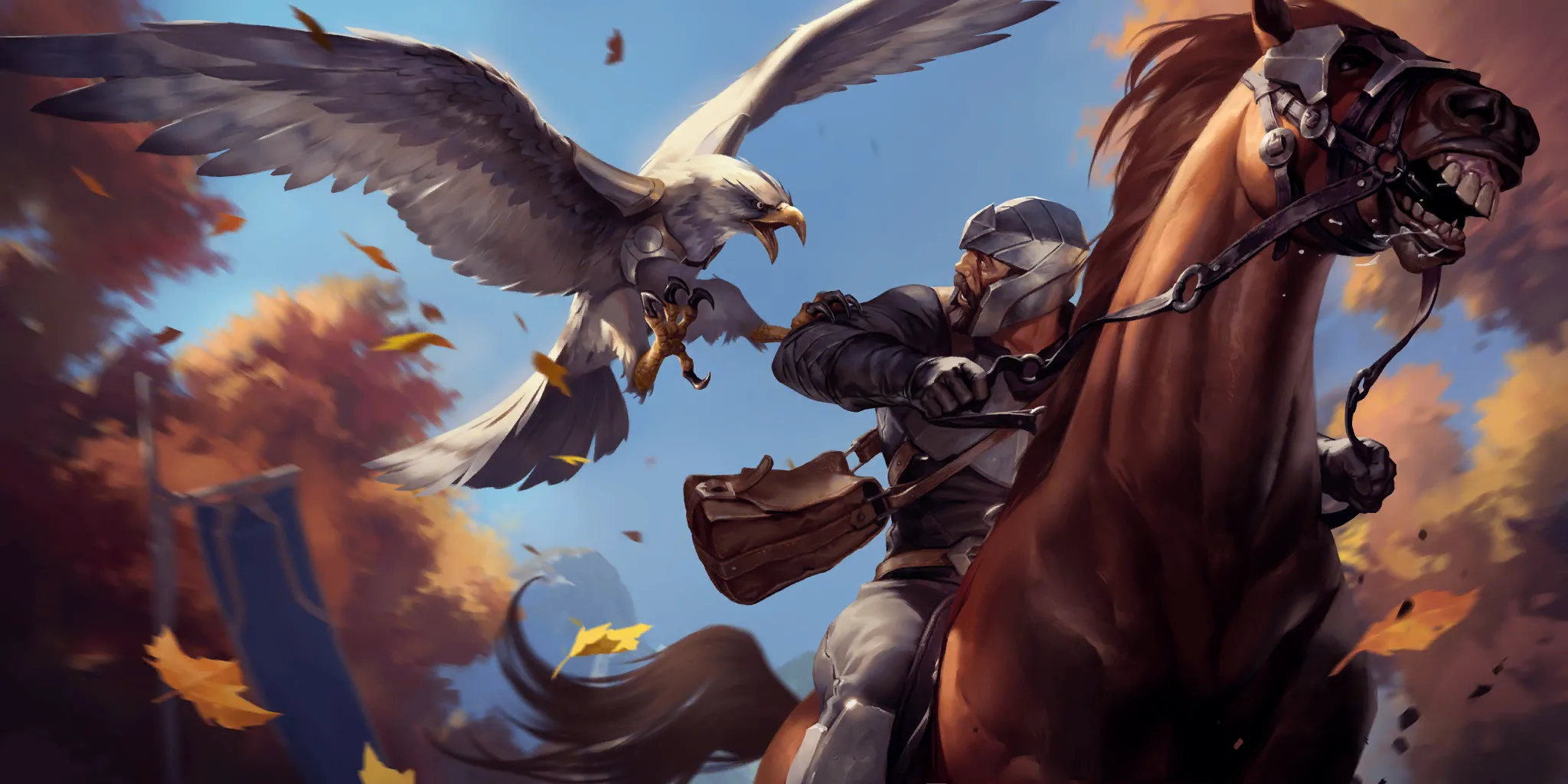

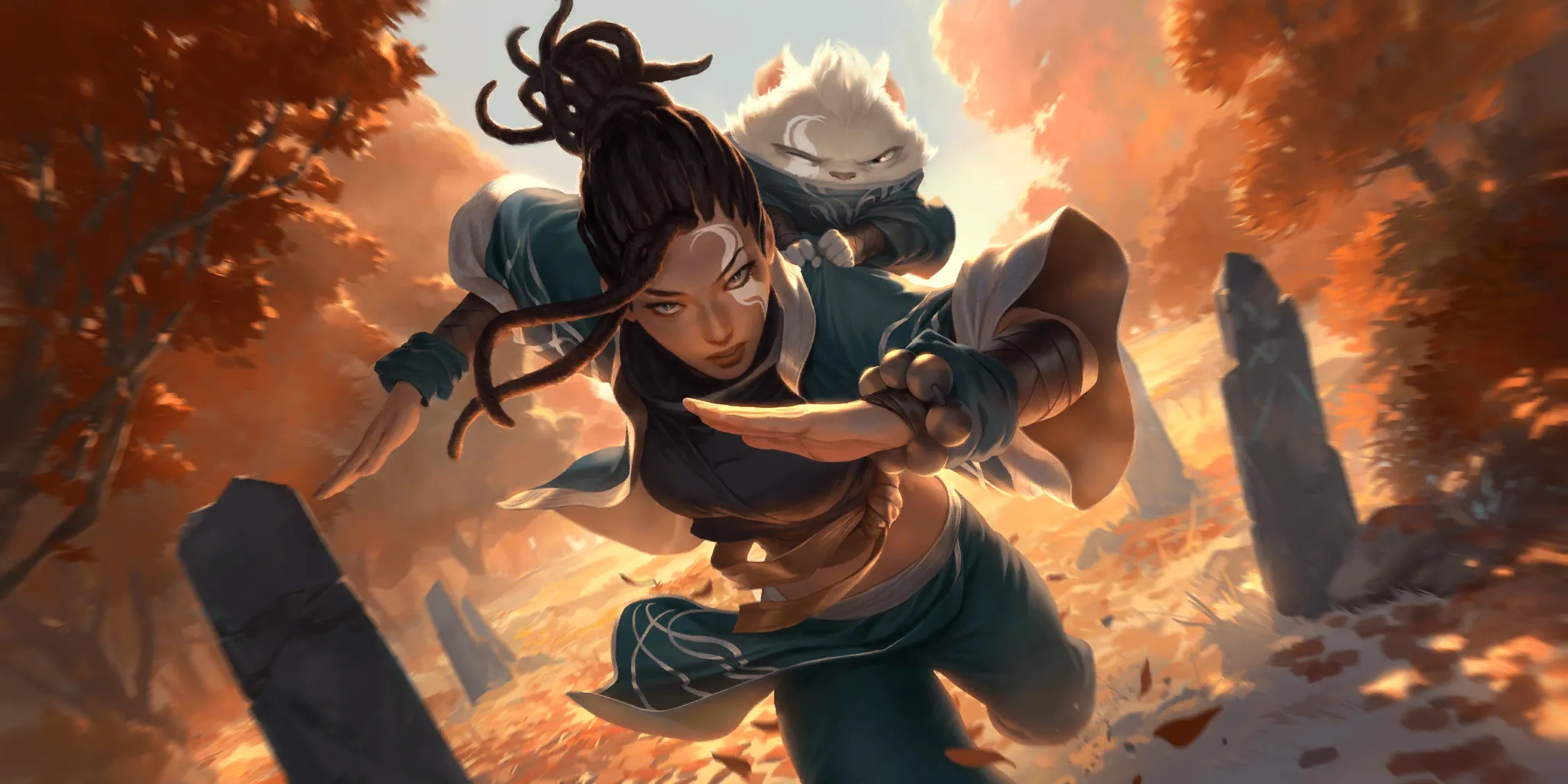
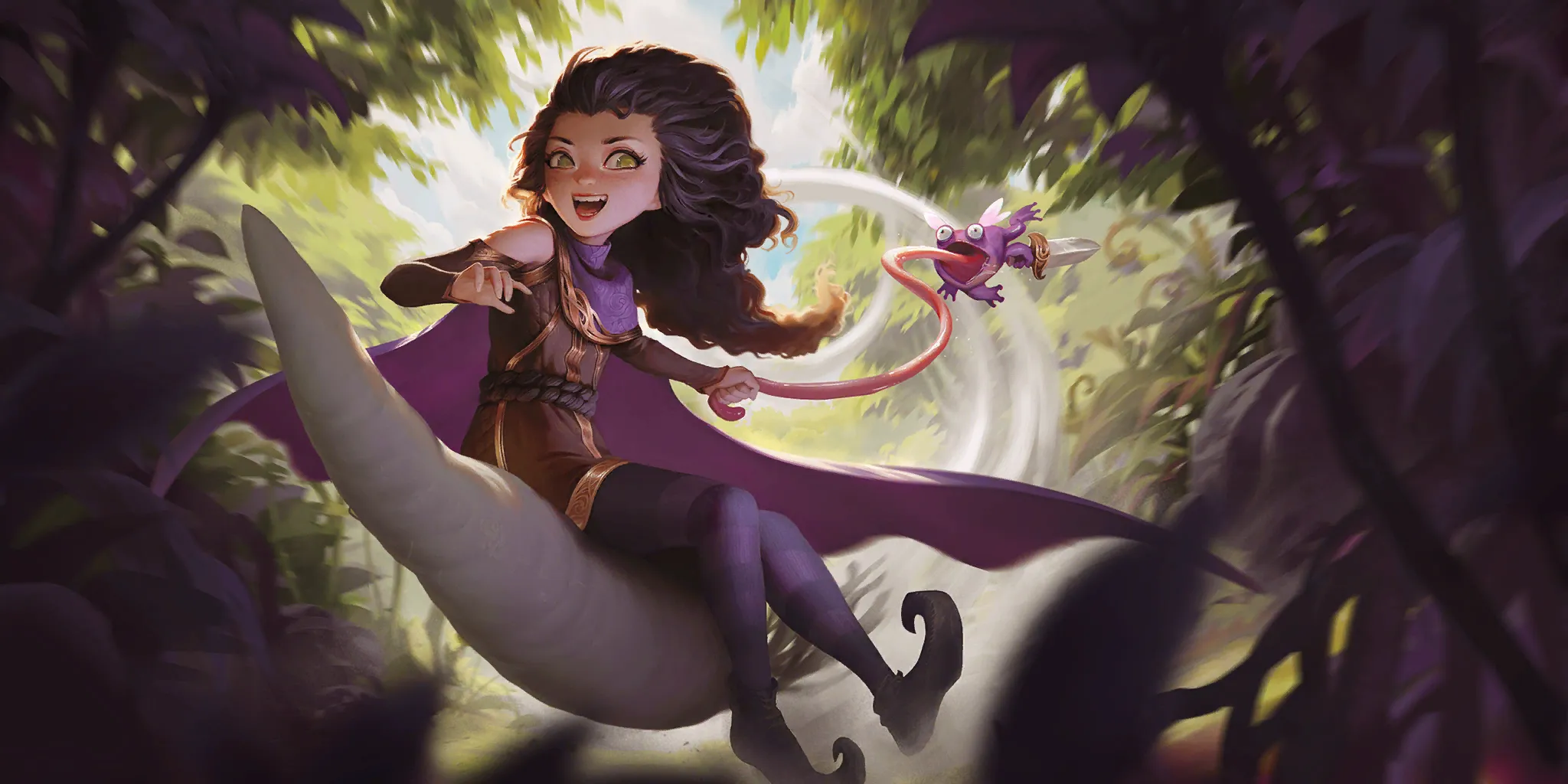

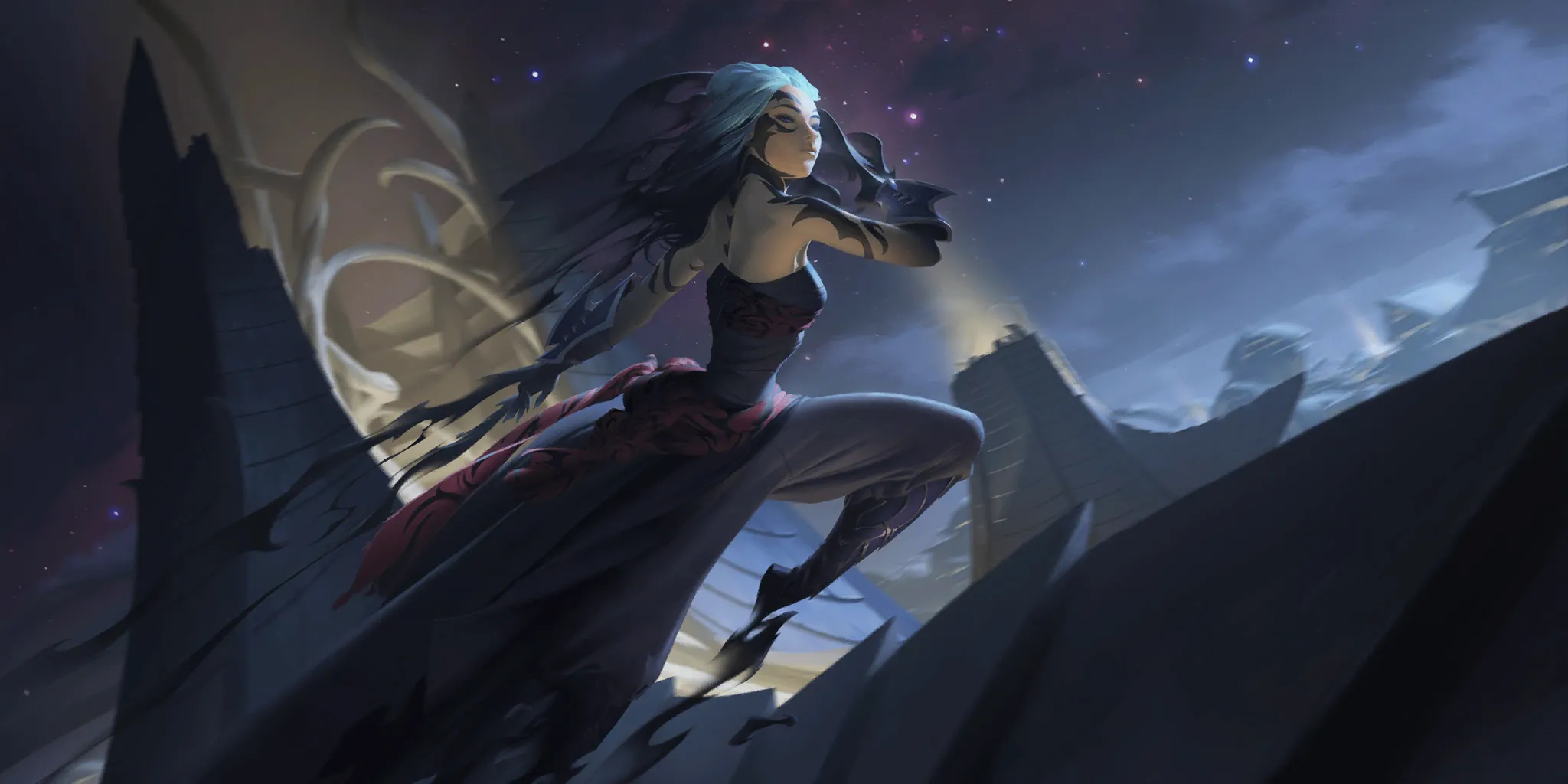

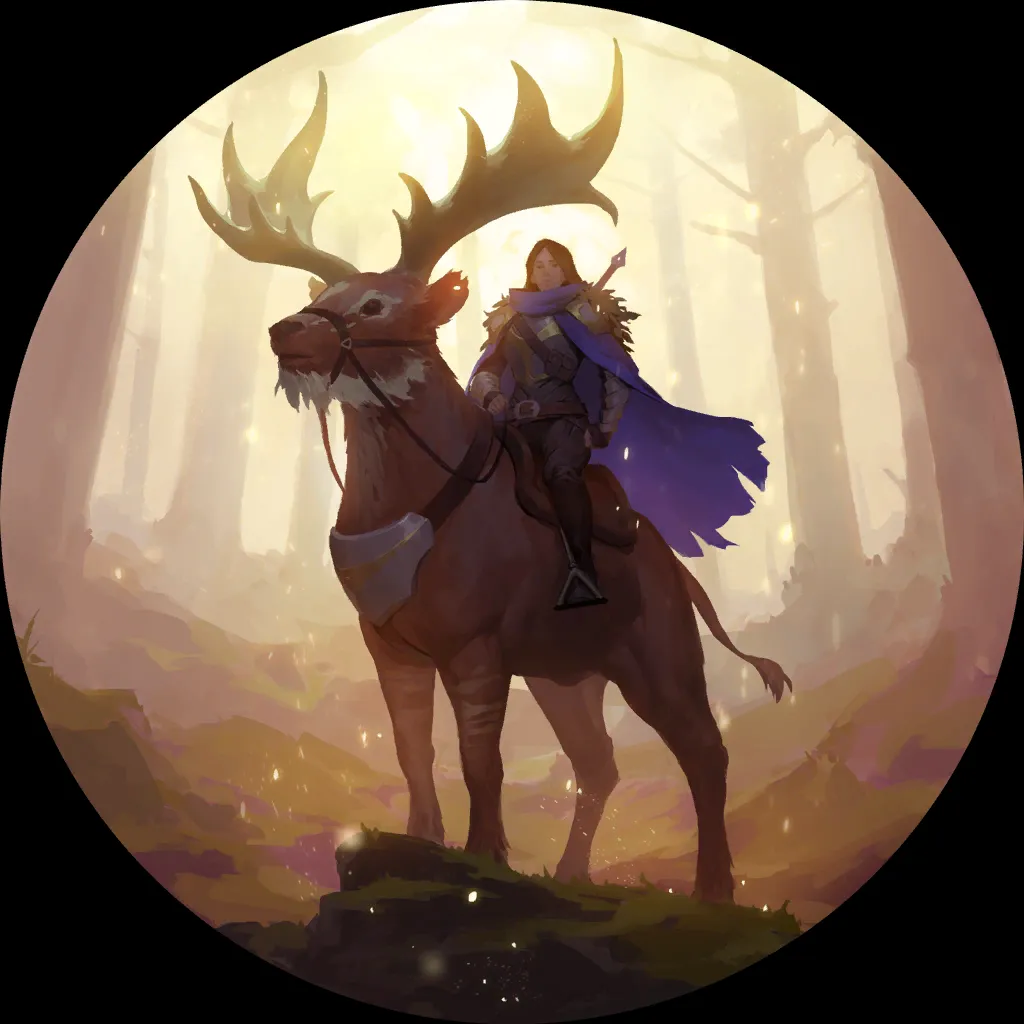
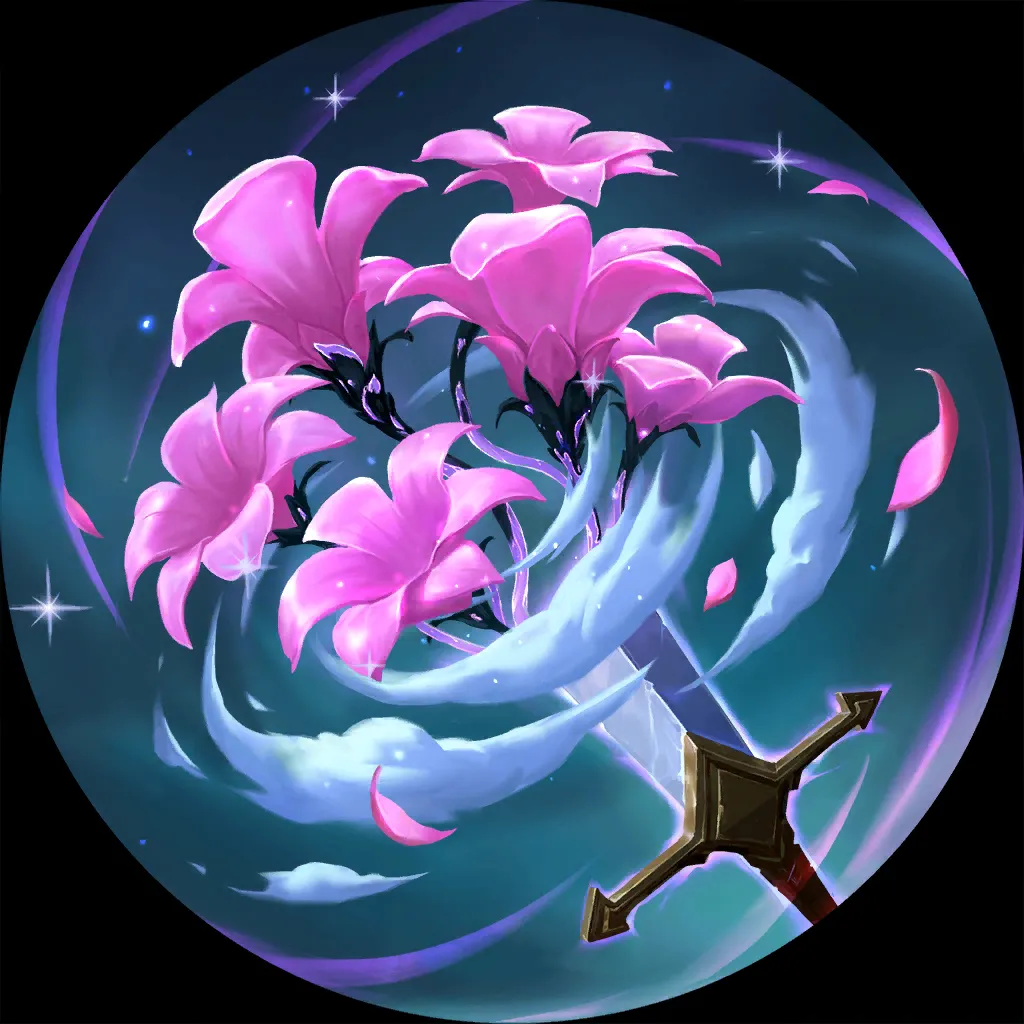
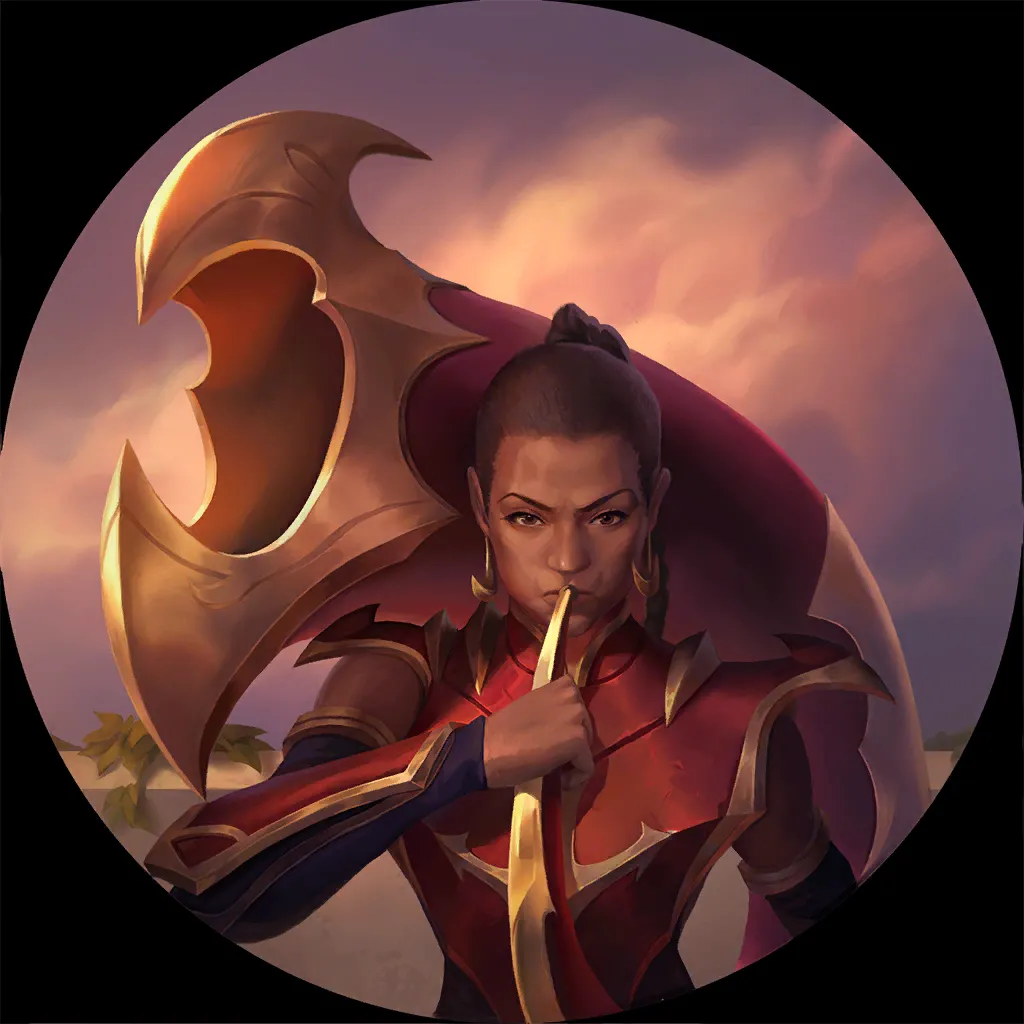
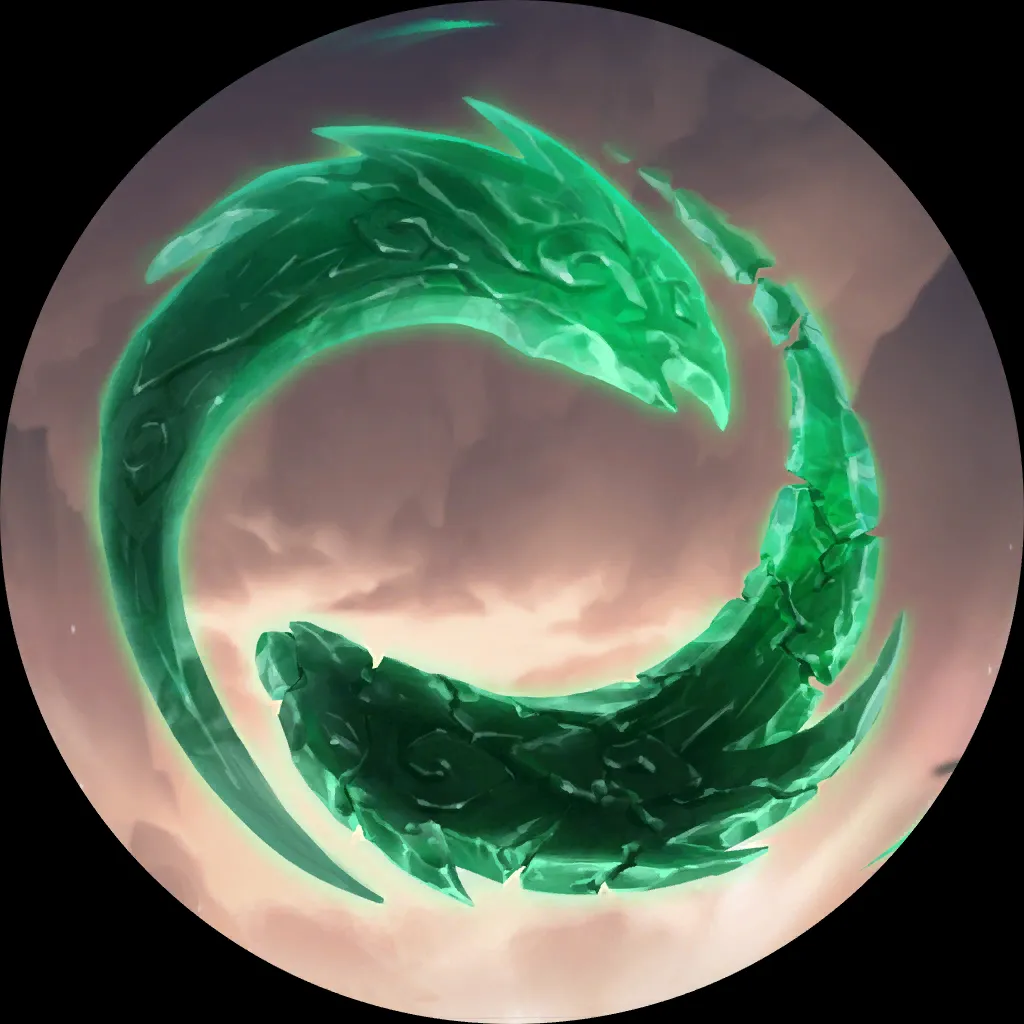
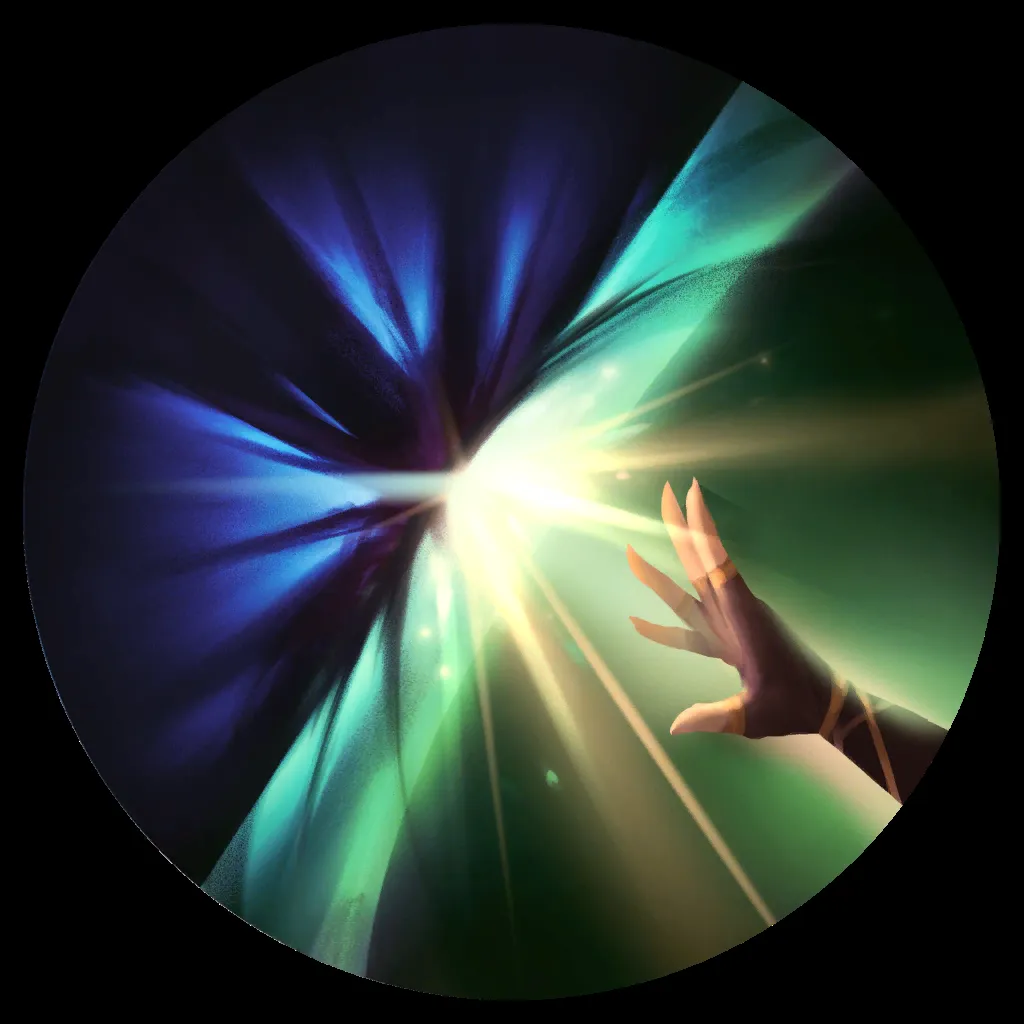
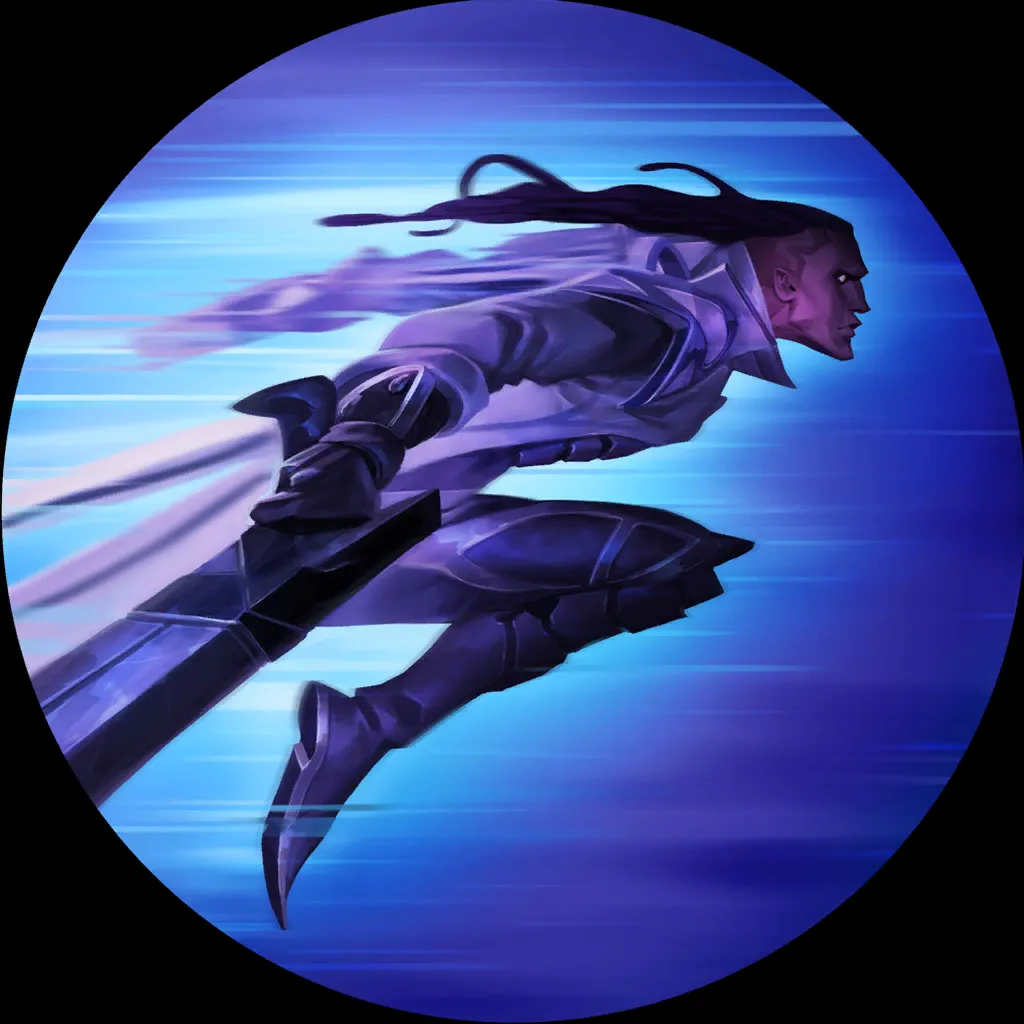
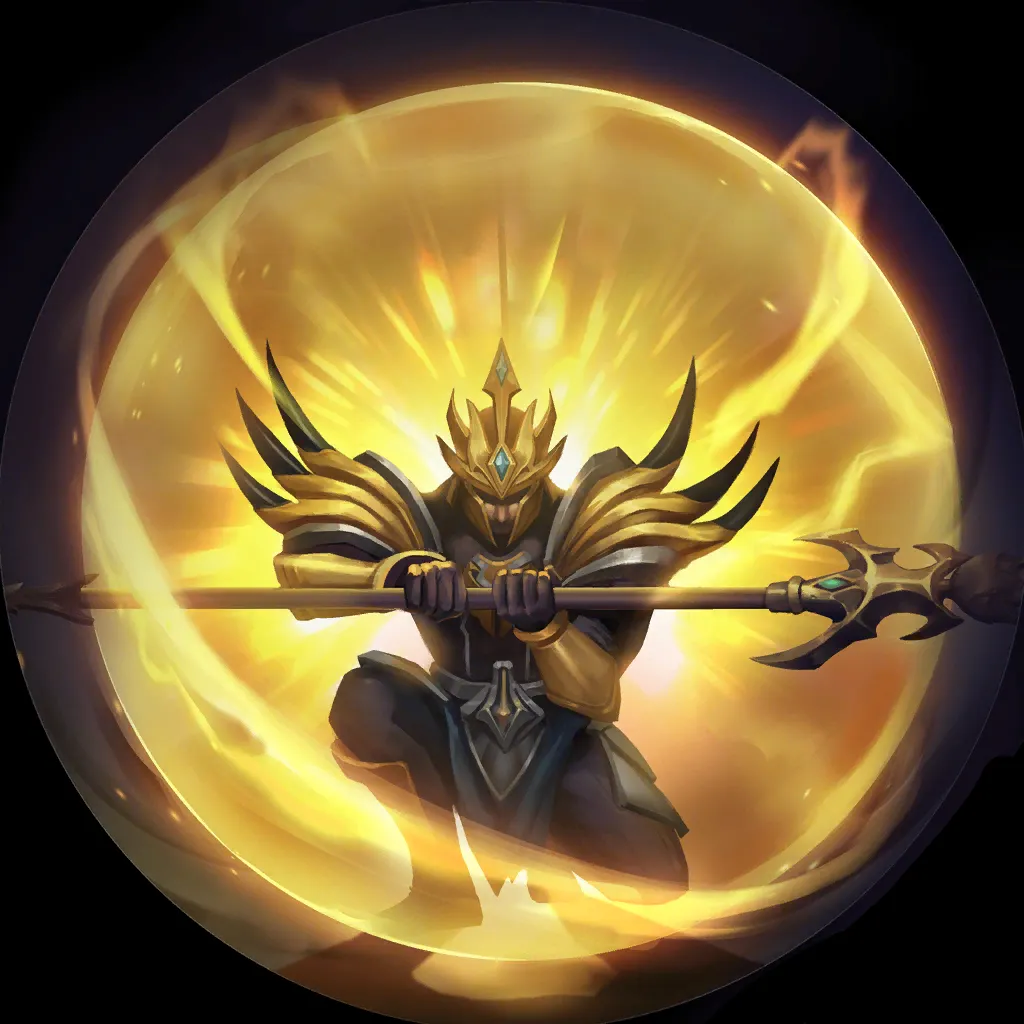
Here are the deck optimization and mulligan data tables:
Champions


3 Lulu -- Lulu effectively negates the nerf and hot-fix nerf to Poppy, ensuring all of your units get buffed when attacking. Also combines very well with Tracker to control the board and often levels up in combination with Young Witch.
-- Lulu effectively negates the nerf and hot-fix nerf to Poppy, ensuring all of your units get buffed when attacking. Also combines very well with Tracker to control the board and often levels up in combination with Young Witch.
3 Poppy -- Likes to be buffed by Lulu or Young Witch to buff the rest of your board as well. Often makes the difference between winning and losing, especially if you can level her up early with a Rally effect (or 2…or 3).
-- Likes to be buffed by Lulu or Young Witch to buff the rest of your board as well. Often makes the difference between winning and losing, especially if you can level her up early with a Rally effect (or 2…or 3).
Followers
3 Fleetfeather Tracker -- Great in all matchups and you’re happy to see it in your opening hand and drawing it early. Works for board control and for removing blockers if that’s what you need at the moment.
-- Great in all matchups and you’re happy to see it in your opening hand and drawing it early. Works for board control and for removing blockers if that’s what you need at the moment.
3 Brightsteel Protector -- For a short while, the data indicated this could be a 2-of, but the metagame turned more aggressive to combat Ahri Kennen and the recently-buffed control decks. Great in combination with Tracker, your champions, and / or providing defense from elusive attackers.
-- For a short while, the data indicated this could be a 2-of, but the metagame turned more aggressive to combat Ahri Kennen and the recently-buffed control decks. Great in combination with Tracker, your champions, and / or providing defense from elusive attackers.
2 Greenglade Duo -- Although vulnerable with 1 health, Duo is great for chipping, or in some cases chunking, away at your opponent’s health total. Duo used to work better when running some number of Navori Bladescout but still works fine, better as a 2-of in this deck although it can surely be a 1-of.
-- Although vulnerable with 1 health, Duo is great for chipping, or in some cases chunking, away at your opponent’s health total. Duo used to work better when running some number of Navori Bladescout but still works fine, better as a 2-of in this deck although it can surely be a 1-of.
3 Young Witch -- This card got nerfed you say? Well, so did the Plunder deck. Even with a lot of ping effects in the metagame still, Young Witch is an all-star, just take more care as to when you play her (make sure you have a protection spell if you need to keep her alive). Great for pressuring the opponent and helping Lulu attack while also leveling her up faster.
-- This card got nerfed you say? Well, so did the Plunder deck. Even with a lot of ping effects in the metagame still, Young Witch is an all-star, just take more care as to when you play her (make sure you have a protection spell if you need to keep her alive). Great for pressuring the opponent and helping Lulu attack while also leveling her up faster.
2 Laurent Protege -- Protege acts like Trackers #4 and #5 to some extent -- great for board control, can have its health reset to keep controlling the opponent’s board and gets buffed by Poppy (assuming she’s not frostbitten…who does that anyways???).
-- Protege acts like Trackers #4 and #5 to some extent -- great for board control, can have its health reset to keep controlling the opponent’s board and gets buffed by Poppy (assuming she’s not frostbitten…who does that anyways???).
3 Shadow Assassin -- although Assassin isn’t spectacular, she does her job effectively, laying down Elusive beats, providing much needed draw to refill your hand, which at the same time helps you dig for rallies or additional units to close out games.
-- although Assassin isn’t spectacular, she does her job effectively, laying down Elusive beats, providing much needed draw to refill your hand, which at the same time helps you dig for rallies or additional units to close out games.
Spells
1 Ghost -- often you’re going to be using this spell to close out games, deal key and timely damage, or worst case scenario using it to block to save precious health points. Always mulligan it away in your opening hand. The statistics show it’s a good draw and ⅔ of the time you play it you’ll win.
-- often you’re going to be using this spell to close out games, deal key and timely damage, or worst case scenario using it to block to save precious health points. Always mulligan it away in your opening hand. The statistics show it’s a good draw and ⅔ of the time you play it you’ll win.
2 Ranger's Resolve -- don’t leave home without exactly 2 in your deck! Sometimes it helps swing major board states and sometimes it’s saving a key unit. Great defense against Area of Effect damage spells like Withering Wail and to a lesser degree Avalanche.
-- don’t leave home without exactly 2 in your deck! Sometimes it helps swing major board states and sometimes it’s saving a key unit. Great defense against Area of Effect damage spells like Withering Wail and to a lesser degree Avalanche.
1 Nopeify! -- Nopeify! Is often redundant with one of your buff spells to save your units but it can do a lot more, like deny the Pokey Stick’s draw and to stop the small burn spells that are flung towards your nexus.
-- Nopeify! Is often redundant with one of your buff spells to save your units but it can do a lot more, like deny the Pokey Stick’s draw and to stop the small burn spells that are flung towards your nexus.
3 Sharpsight -- this is a premier combat trick that is often used to ensure your champions stay alive, that alone is usually enough to win you games. Do your best to use it as reactively as possible and be sure to hold up the spell mana to use it.
-- this is a premier combat trick that is often used to ensure your champions stay alive, that alone is usually enough to win you games. Do your best to use it as reactively as possible and be sure to hold up the spell mana to use it.
3 Twin Disciplines -- similar to Sharpsight, obviously it can provide an additional point of health defense or 1-or more points of damage (when you rally), excellent for facilitating combat trades.
-- similar to Sharpsight, obviously it can provide an additional point of health defense or 1-or more points of damage (when you rally), excellent for facilitating combat trades.
2 Deny -- if your opponent wants to stun your Poppy, bounce your units, Feel the Rush, or deal lethal damage with Bullet Time (Miss Fortune’s leveled up ability), just say, “No!”
-- if your opponent wants to stun your Poppy, bounce your units, Feel the Rush, or deal lethal damage with Bullet Time (Miss Fortune’s leveled up ability), just say, “No!”
The statistics show this is likely ideal as a 1-of, but because it’s such a good card to draw I stuck with 2 copies during my climb -- the metagame has shifted to less control though in which case now just one copy feels good again. If the ladder floods with AK go back up to 2.
3 Golden Aegis -- Worth keeping a copy in the slower matchups if you have a strong opening hand, this helps you advance your champions level ups while dealing critical damage, it also helps you attack more strategically, especially if your opponent doesn’t have a lot of 1-damage spells.
-- Worth keeping a copy in the slower matchups if you have a strong opening hand, this helps you advance your champions level ups while dealing critical damage, it also helps you attack more strategically, especially if your opponent doesn’t have a lot of 1-damage spells.
3 Relentless Pursuit -- 6 rallies you say? Yes, that’s the correct number -- Relentless Pursuit is especially great at impersonating Young Witch and Lulu buffs on Poppy to keep the board-wide buffs going. If played right, for example, on an elusive unit, it’s often a game-winning play.
-- 6 rallies you say? Yes, that’s the correct number -- Relentless Pursuit is especially great at impersonating Young Witch and Lulu buffs on Poppy to keep the board-wide buffs going. If played right, for example, on an elusive unit, it’s often a game-winning play.
The Mulligan
Aggro
Against aggro decks we need to control the board early and then we can overwhelm the opponent. Keep cards like Tracker, Brightsteel Protector and / or Young Witch, Lulu, and save / buff spells. Against very aggressive decks you don’t want to keep Poppy unless you’re attacking on even turns and you have enough cheap units to protect your nexus health.
Midrange
Against midrange decks we also need to control the board, but we will tend to do so with Tracker and heavier reliance on our champions. Again we keep 1-2 buff spells and depending on the context of our opening hand we can consider keeping a Laurent Protege.
Control
Against control decks we want to keep a cheap unit, preferably Tracker because then we can bank the mana on turn 2 as spell mana to defend Lulu on turn 3 or Poppy on turn 4.
Against Shadow Isles decks you can keep a Ranger’s Resolve to protect against Withering Wail or Vile Feast, and consider keeping a Deny if you have Poppy and another cheap unit, this way you can defend her from Vengeance. If you have, for example, Tracker, a buff spell and Lulu, you can consider keeping a rally spell as those will often help you close out the game before your opponent can stabilize
Other considerations against key matchups and / or champions:
Against Ahri Kennen:
Strongly consider keeping a Deny or Nopeify! in your opening hand, you’re also looking for Poppy (for pressure) and / or Lulu (for board control). You need to make sure they don’t stop you from applying pressure by stunning your champions with Concussive Palm or recalling them with Homecoming -- Deny comes in clutch for those, and Nopeify! comes in handy for when they want to recall a Droplet (that unit is very sticky and hard to get off the board, still try to kill it or they can draw into everything they need to pull out the win)
Against Darkness:
You need your challengers to contest their most threatening units (Catalyzer -- threatening because it buffs Darkness, Veigar, and Senna), and your champions are sorely needed unless your opponent has a very poor draw so look for them aggressively in your mulligan. Nopeify! is a good tool against Pokey Stick, and Ranger’s Resolve is very useful to protect against Withering Wail. Do your best to set up open attacks with Poppy to ensure buffing your board before they can Minimorph her.
Against TF Nami:
Twisted Fate's Red Card is your worst enemy so a Ranger’s Resolve is a solid keep in your opening hand, otherwise you need to find your challengers and champions -- they have so many orthogonal (link) plans and threatening units that you can’t let them survive. If you can beat them down before they can get a champion or Shelly down, that’s your best path to Victory. Try to set up open attacks in this matchup before TF can stun your champion with Gold card.
is your worst enemy so a Ranger’s Resolve is a solid keep in your opening hand, otherwise you need to find your challengers and champions -- they have so many orthogonal (link) plans and threatening units that you can’t let them survive. If you can beat them down before they can get a champion or Shelly down, that’s your best path to Victory. Try to set up open attacks in this matchup before TF can stun your champion with Gold card.
Against Bandle Tree: (I know, I know, who plays that in ranked these days?)
Bandle Tree can be aggressive, but you can get damage in with your elusive units. The key thing to consider is to try and not take any damage with your champions -- Ravenous Flock can finish them off very easily. That said, look for Young Witch, Brightsteel Protector, and Golden Aegis to facilitate this goal. Consider when you mulligan that you’re on a clock and it behooves you to deal lethal damage as quickly as possible. Again, they pack Minimorph so look to set up open attacks with Poppy.
Closing Thoughts
Ever since I saw the matchup spread for the Elusive Rally archetype from when Moe won the Seasonal tournament with it, I’ve kept an eye on this deck and have really enjoyed playing it. It’s worst matchup is against decks with lots of removal because most of our units have such low health (think Ezreal Draven and Kindred Sentinels, even Ekko Zilean), but with careful planning and smart play, this deck can win against any deck, even in unfavored matchups.
As you can see, it's possible for a regular, aspiring player to overcome their personal challenges, whether it’s ladder anxiety, a busy lifestyle, negative attitude towards the metagame or certain decks, or making misplays for days and still reach Masters.
I’m often indecisive (remember I’m a Libra after all) when it comes to choosing a deck, I can get discouraged based on my Twitter feed and a streak of losses on the ranked ladder, and I usually struggle at figuring out how to mulligan with a new deck. However, I have identified my go-to tools to identify a way to address these issues -- what works for me is using matchup grids, optimization tables, deck guides for dummies and / or articles that provide specific mulligan advice for common matchups, and an attitude-checking filter when I’m looking at tier lists or negative feedback regarding deck(s) in my Twitter feed.
With the help of a good attitude, willingness to learn, asking for help when you need it, and hard work, you too (if you’re not already there) can answer the call and reach the LoR Masters rank!
This is my first time sharing my gaming story and writing a deck guide, so I’d greatly appreciate any feedback you have for me and if you have any questions, let me know in the comments or on Twitter (@bA1anceLoR) and I’ll make sure to respond in a timely manner.
Good luck, and have fun!

